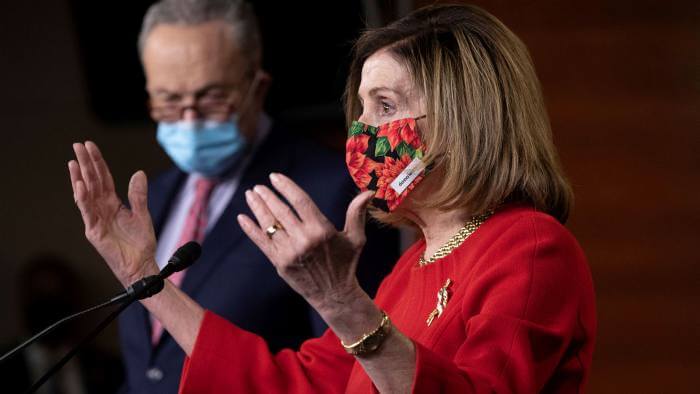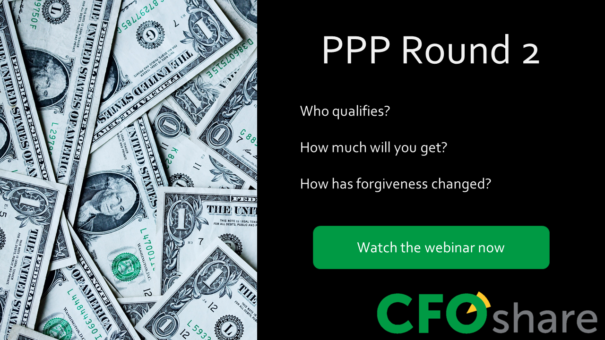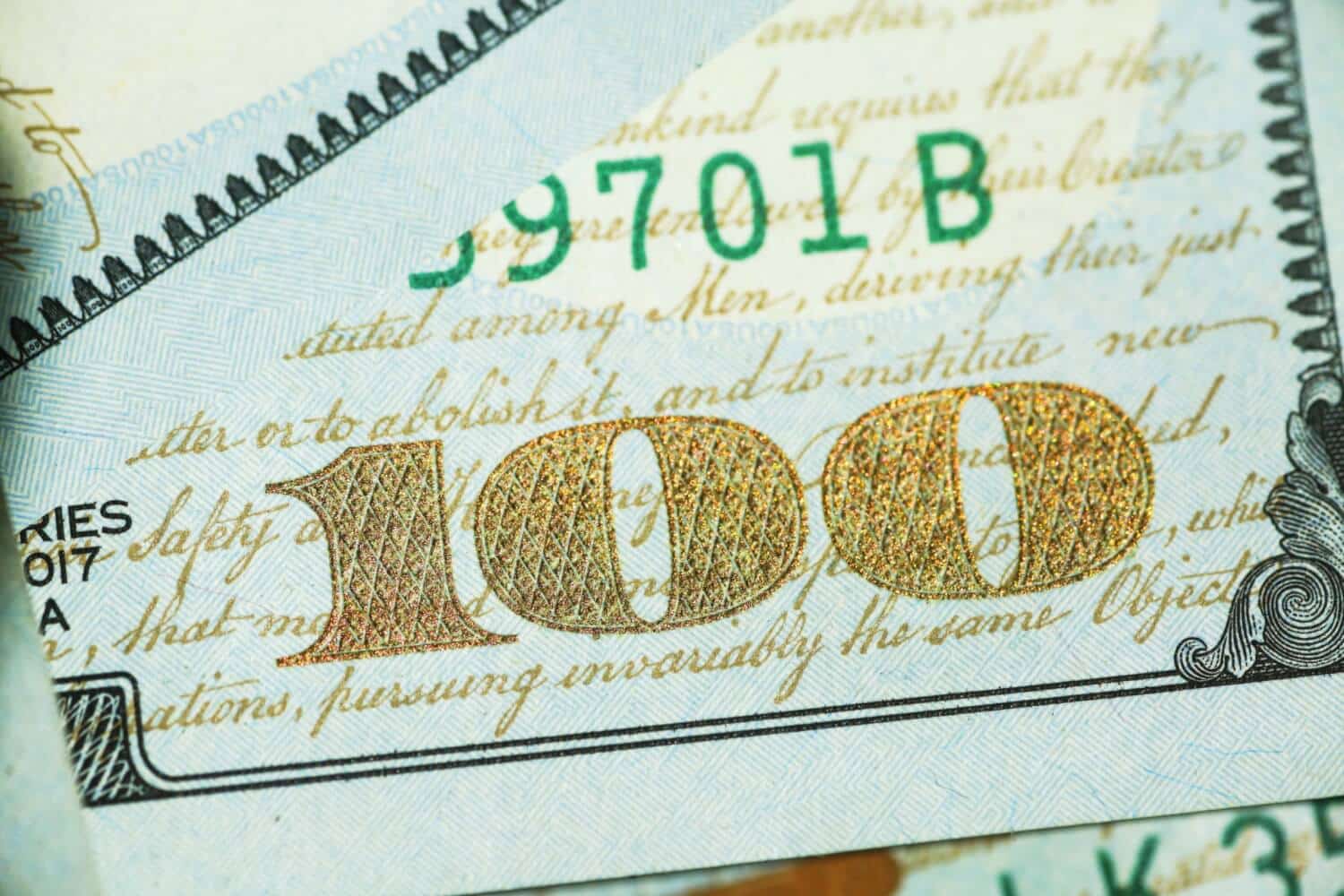After 2 months of ongoing debate and negotiations, congress and president Trump signed a new stimulus bill which includes a second round of PPP loans. We at CFOshare took a peak at the PPP bill that passed congress December 21st, and here’s the details on what’s coming (for an executive summary, check out our 1-minute article, or check out our webinar)
Who can apply for PPP second draws
Fewer businesses will qualify for the second round of PPP funding. The following limitations will exist for any entity applying:
Organizations must have experienced a 25% reduction in gross receipts for any quarter of 2020.
When comparing against the same quarter in 2019, your organization must have experienced at least one 25% reduction of revenue. Revenue is defined on either a cash or accrual basis, whichever is consistent with your bookkeeping. If your business started in 2019, you’ll have to limit your analysis to just the quarters you existed; or, if you were formed in 2020, you’ll have to compare Q2, Q3, and Q4 against 2020 Q1.
Organizations must have fewer than 300 employees.
This round of funding excludes larger organizations with more than 300 employees. The round of funding does allow for a wide variety of organizations including “any business concern, nonprofit organization, housing cooperative, veterans organization, Tribal business concern, eligible self-employed individual, sole proprietor, independent contractor, or small agricultural cooperative.”
No lobbying organizations.
The act specifically excludes any business concern primarily engaged in political or lobbying activities, including think tanks, research, and advocacy groups.
No public companies
After the sever public outcry against the first round of loans going to public companies, congress took the time to specifically prohibit any business listed on a stock exchange.
No Chinese owned businesses
Second draws of the PPP program are specifically prohibited for businesses that:
- Are organized under the laws of the People’s Republic of China or Hong Kong, or
- Has “significant operations” in China or Hong Kong, or
- Are owned or held at least 20% by a Chinese or Hong Kong entity, or
- Allocates at least 20% of the profit interest to a Chinese or Hong Kong entity, or
- Allocates at least 20% capital ownership to a Chinese or Hong Kong entity, or
- Retains one member on the board of directors who is a resident of China, or
- Is a person (e.g. independent contractor) that is a registered foreign agent
No businesses owned by congressmen, The President, or The Vice President.
Washington politicians are not allowed to benefit from the PPP program.
How much is the PPP second round draw?
Like the first round of the PPP, second round draws will be based on historic payroll expenses. Historic payroll expenses are the same as the first round and, as a reminder, include:
- Regular wages
- Commissions
- Bonuses
- Tips
- Holiday, vacation, and sick pay
- Qualified benefits such as company paid health insurance premiums (subject to specific rules, e.g. S-corp owner premiums)
To determine the amount of your PPP round 2 loan, calculate your average qualified payroll expenses for the following time periods:
- Calendar year 2019 divided by 12
- The past 12 months’ prior to applying for your loan divided by 12
- If you are a seasonal business, your peak 12-week payroll period between 2/15/19 and 2/15/20 divided by 3
- Seasonal businesses are defined as a business with a 6-month period whos revenue is 33.33% or less of the other 6-month period.
Businesses should select the period with the highest average payroll expenses and multiply it by 2.5. This will be the loan amount for most businesses. Accommodation and Food Service businesses who use NAICS code 72 may use a multiplier of 3.5 instead, giving them larger loans.
What has changed about PPP loan forgiveness
There are some major wins for both the first and second round of PPP loan forgiveness.
Supplier costs are forgivable expenses.
An expenditure made to an entity to supply goods for goods that are essential to operations and made pursuant to a contract or PO issued before your PPP loan application is now a forgivable expense (with the last clause being excused for perishable goods.) This is a huge win for retail, wholesale, and manufacturing businesses.
Facility modifications and PPE are now forgivable expenses.
Sneeze guards, employee health screening equipment, business space expanded to an outdoor area, and purchased personal protective equipment for your employees are all forgivable expenses.
Property damage expenses are forgivable.
Forgivable expenses now include costs related to property damage, vandalism, or looting due to public disturbances that occurred in 2020. Note that expenses already covered by insurance settlements do not qualify.
Business expenses paid with forgiven PPP loans will be tax deductible.
Taxes on PPP loans was a problem we highlighted in previous articles, and congress took the excellent step to correct the IRS on this issue. Now, every business owner can add back tens or hundreds of thousands of dollars to their 2021 budgets knowing they will not be hit by a surprise tax bill.
Loans under $150k will have significantly simpler forgiveness process.
This is essentially an extension of the short application that already exists for loans under $50k. Rather than having to provide lengthy documentation and onerous calculation , a business owner can simply certify that the PPP funds were used correctly. If your business meets this definition, you should still do the calculations – this does not exempt business you from an audit! In fact, another section of the stimulus bill mandates the administration to formalize a PPP forgiveness audit program. Remember, to certify you did the calculations when you knowingly did not is fraud, which carries serious penalties, so work with your accounting team to ensure you are compliant.
Your covered period may be any amount of time between 8 and 24 weeks.
Most businesses will just use the full 24 week period, but some businesses will benefit from a shorter period. These are the businesses who conducted layoffs after receiving their PPP loan. Forgiveness calculations punish layoffs during a covered period; however, you can now elect to have your covered period end before those layoffs occurred. If you are unsure what covered period you should use, contact your accountant or finance team to get their advice.
EIDL advances no longer count against PPP forgiveness.
If you received an EIDL advance (an amount of $10k or less which suddenly appeared in your bank account last spring), your PPP loan forgiveness will no longer be penalized by that amount.
How does the new PPP round affect my business?
Here is what CFOshare is recommending to all our clients:
- Determine if you qualify for the new round of funding by evaluating your year-over-year quarterly gross receipts. You need at least one quarter with 25% reductions.
- Wait to apply for forgiveness until the new forms are out. With so many changes to the program, you’ll want to wait to give the SBA and your lender time to incorporate those changes.
- If you already applied for round 1 forgiveness, too late. The act specifically prohibits businesses from re-applying for forgiveness to take advantage of the new provisions. Sorry!
Not sure what the next step is for your business? Check out our webinars about PPP forgiveness and PPP round 2, or contact one of our fractional CFOs to discuss your business’ specifics.





